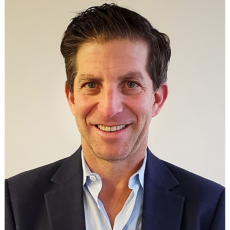What makes the Marathon Palladium-Copper project a promising venture?
This project is located in Ontario, a Tier 1 jurisdiction with excellent infrastructure, renewable energy sources, and a supportive legislative environment both federally and provincial, and where the First Nations are eager to support it. Copper is the cornerstone metal needed for the electrification of cars and palladium is needed for hybrid vehicles, for which the demand is growing by 20% per annum. Norilsk, the largest palladium producer in the world, has seen production disruptions due to a lack of import of spare parts and other consumables needed in operations, resulting from the sanctions against Russia. The other major producer in South Africa has significant power issues, leading to curtailed mine production. With the supply flat and the demand for palladium increasing through the medium term and the demand for copper outstripping supply for the foreseeable future, our Marathon mine is going to be a vital part of the supply chain in the future. In addition to the Marathon Project, we have another very large molybdenum project which went through the feasibility study process in 2006, and has been shelved since that time. Momentarily, our hands are full with the palladium-copper project, but once we get it rolling, we are looking to partner with another mining company and advance the Davidson site as well, given the growing importance of molybdenum.
How are you perceiving the investment climate at the moment and how far are you with the funding for your core project?
Up to this point, we have raised almost 80% of our project financing, and we have a metals stream with the largest streaming company in the world under which, for CAD$240 million, we sold22% of our platinum and 100% of our gold, which is a little less than 5% of our revenue. We also have a term sheet and a mandate letter from a Syndicate of Banks for US$400 million. The goal is to finalize these agreements in the next six months, and since we are one of the leading critical metals projects in North America, we will hopefully be supported by governmental incentives. Given the recent U.S. banks failures and the fear of recession, the flow of banking funds into development projects is not very abundant so we may have to wait out the current market uncertainty or find some strategic investor that sees the value in this project. Luckily, we have been able to secure an offtake agreement with Glencore, an copper smelter in Quebec, for half of our copper concentrate and we are looking to send the remaining 50% of our metals overseas to a smelter in Europe, to manage any potential risks inherent with having only one customer.
Given the latest developments, do you feel there is a change of attitude regarding the mining sector in Canada?
November 2022, we received our environmental assessment approvals, which is the most difficult environmental assessment process to obtain, and we went through it with a lot of support from a number of different political figures. The project has been analyzed for numerous years to make sure it complies with environmental norms, but we are not interested in fast tracking any permitting because we are aware that our permits are extremely important for modern mining processes. Hopefully, we will receive the first set of construction permits by late spring or early summer and the remaining set by the fourth quarter of this year. As we have a lot of support from both the provincial and federal governments to make sure that these permits do not get delayed, we are confident these timelines will be met.
What do you anticipate as being the main challenges that you would need to overcome to get into production?
Considering that the construction phase is an 18-month long process, we might have some challenges in that period of time, but until we get there, we must see how we can secure the necessary funding and permits. We are fortunate to be surrounded by three other projects that will be finished before us, so there will be useful legislative precedents which we will be able to leverage and construction labor readily available.
What role do you see Generation Mining playing in the future of the Canadian mining industry in ten years from now?
Taking this project from the shelf s to shovel ready was a long but very rewarding process.

All of industry is interested in localizing supply chains, eliminating reliance on other countries, and bringing mining back home for a more secure future.
The success of Marathon is a win for all the involved parties, moreover Northern Canada towns are heavily reliant on mining to thrive. In ten years' time, some of the timelines from exploration to development and construction will hopefully be faster, and mining will have affordable automation and electrification technologies that we can all benefit from.





